Australia has some amazing animals and also some of the weirdest! It also has some beautiful native birds that can turn even the most unenthusiastic heads. This post will introduce you to 10 of the cutest birds that are native to Australia.
1. Superb Fairy-wren
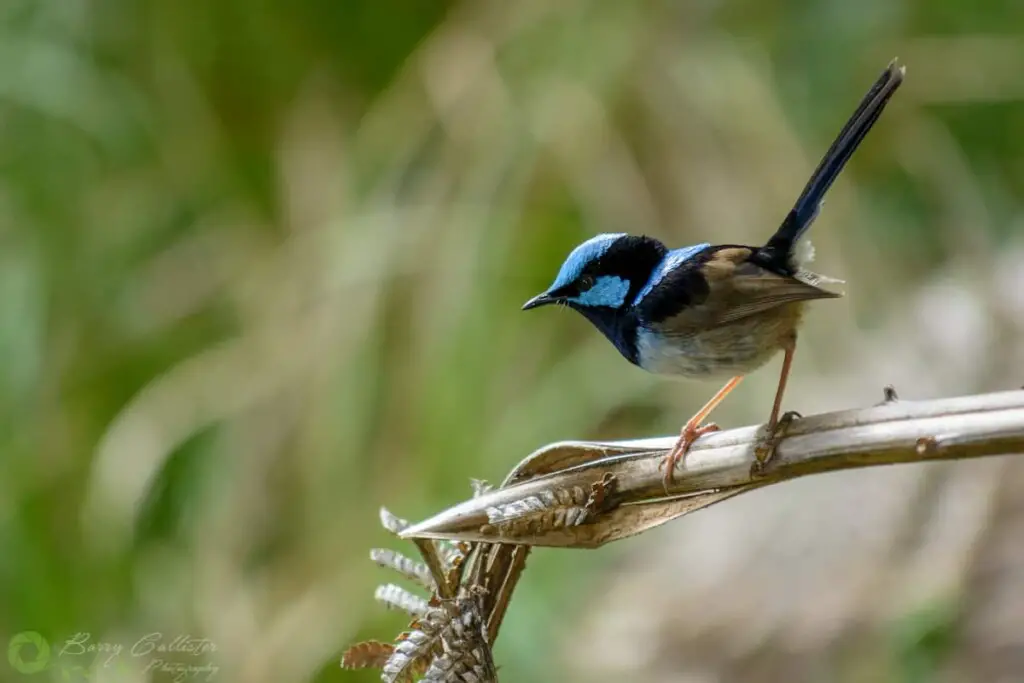
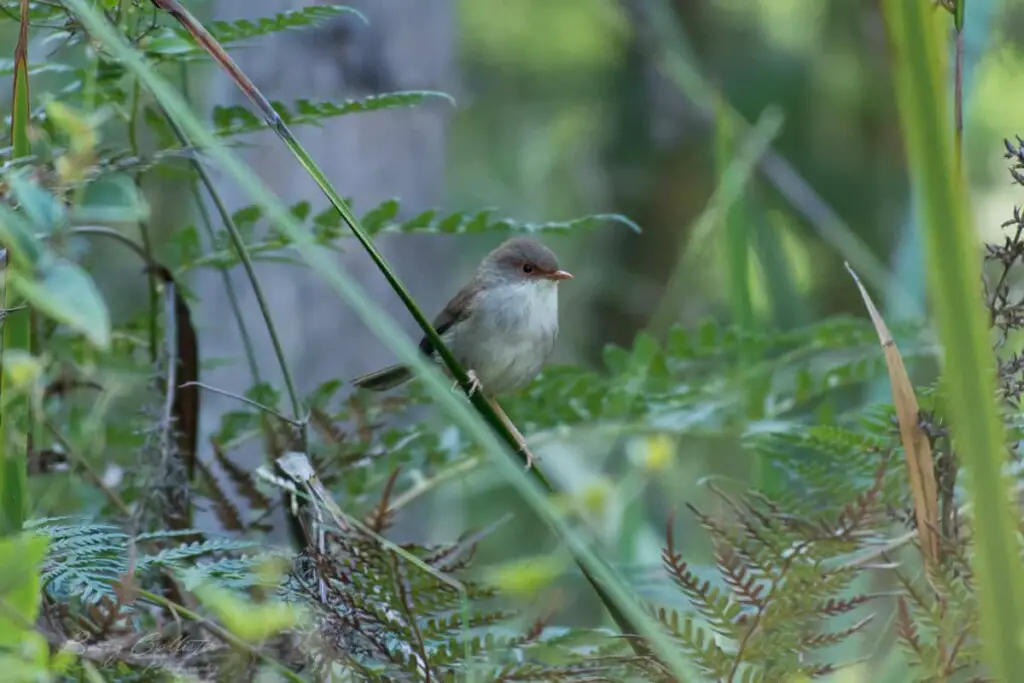
Wrens are popular birds all over the world. They’re small, spritely, and fascinating to watch. The Superb Fairy-wren is one of Australias prettiest wrens.
Superb Fairy-wrens are native to Australia. They are found below the Tropic of Capricorn throughout eastern Australia and Tasmania and can also be found in the southeastern corner of South Australia.
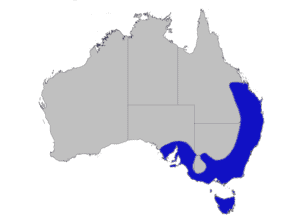
These little blue stunners are around 14cms (5½”) long and weigh between 8 and 13g (0.28-0.46oz). The females are a fawn color with a lighter underbelly.
An interesting fact about Superb Fairy-wrens is that they can alter the size of their eggs based on the climate. Dr. Naomi Langmore from the Australian National University in Canberra led a 10-year study that discovered that female wrens could create larger eggs with more nutrients in hotter weather. Larger eggs ensure that the chicks are born stronger and able to better cope with the warmer weather when there is less access to insects and other food sources.
Discover more Australian birds in this article here on my blog.
2. Eastern Yellow Robin

The Eastern Yellow Robin was my favorite bird for the longest time (until I saw Osprey and then the game totally changed!).
These little grey birds with their brilliant yellow bellies inhabit areas of the east and southeast Australian mainland. They mainly stick to coastal areas but can be found more inland in some places.
A list of cute native birds of Australia would not be complete without these little guys. At 15cm – 16cm (6 inches) in length with an agreeable demeanor, they are definitely cute.
One of their interesting behaviors is the way they will clutch to the side of trees. They will cling there watching the ground below looking for an unsuspecting insect to swoop down on.
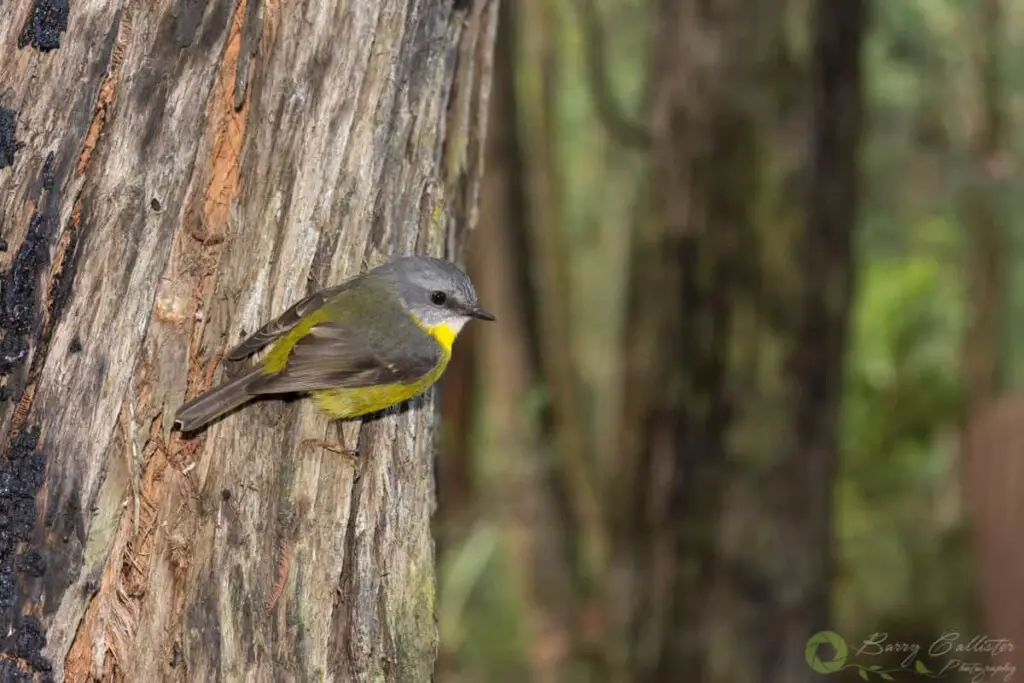
Female Eastern Yellow Robins are similar in plumage to the males but slightly smaller. During the breeding season, they may lay up to three clutches of eggs. Their nests are constructed from bark, grasses, and other vegetation bound together into a cup shape with spider webs.
3. Brown Thornbill

Brown Thornbills are adorable little brown puffballs with white throats and chests with blackish streaks. These tiny birds are common visitors to gardens and bushland in eastern and south-eastern Australia. Male and female Brown Thornbills are very similar.
Even though they are only 9 to 10cm (3½ – 4½”) they are medium-sized Thornbills. Weighing in at just 7g (0.25oz) you just want to stuff one in your front pocket and keep it forever (please don’t!).
Brown Thornbills are excellent tricksters. They will mimic the alarm calls of other small species to scare away Pied Currawongs that prey on their eggs and young. Pied Currawongs are prey to Goshawks so the Brown Thornbill, unable to mimic the call of a large hawk will instead copy the hawk alarm calls of other species such as robins, honeyeaters, and rosellas.
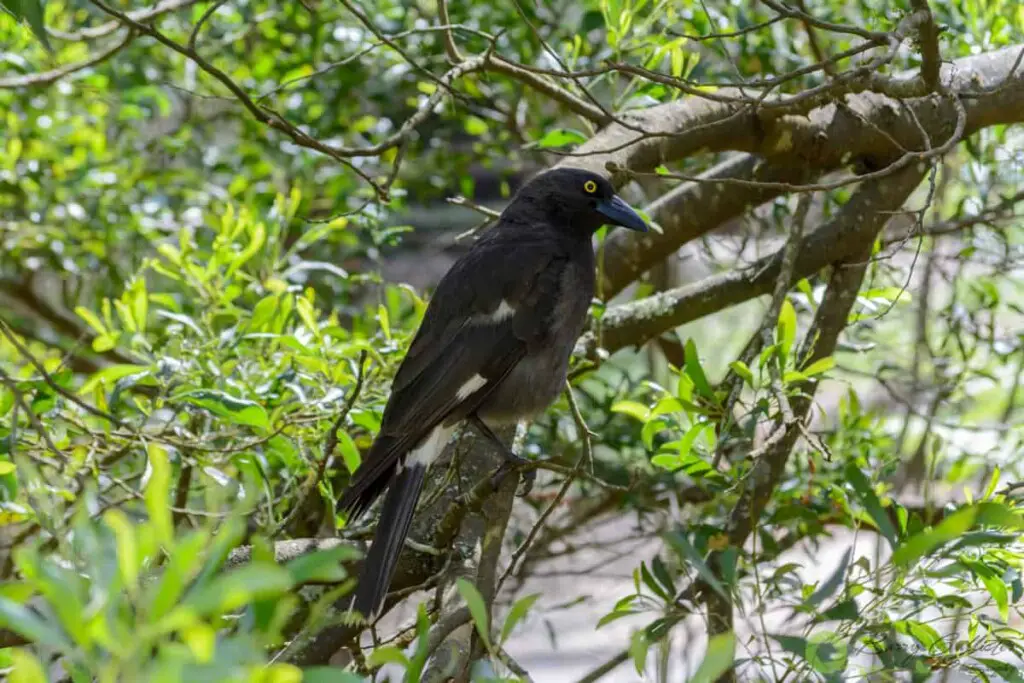
Discover 9 yellow birds that call Australia home in this post.
4. Gang-gang Cockatoo
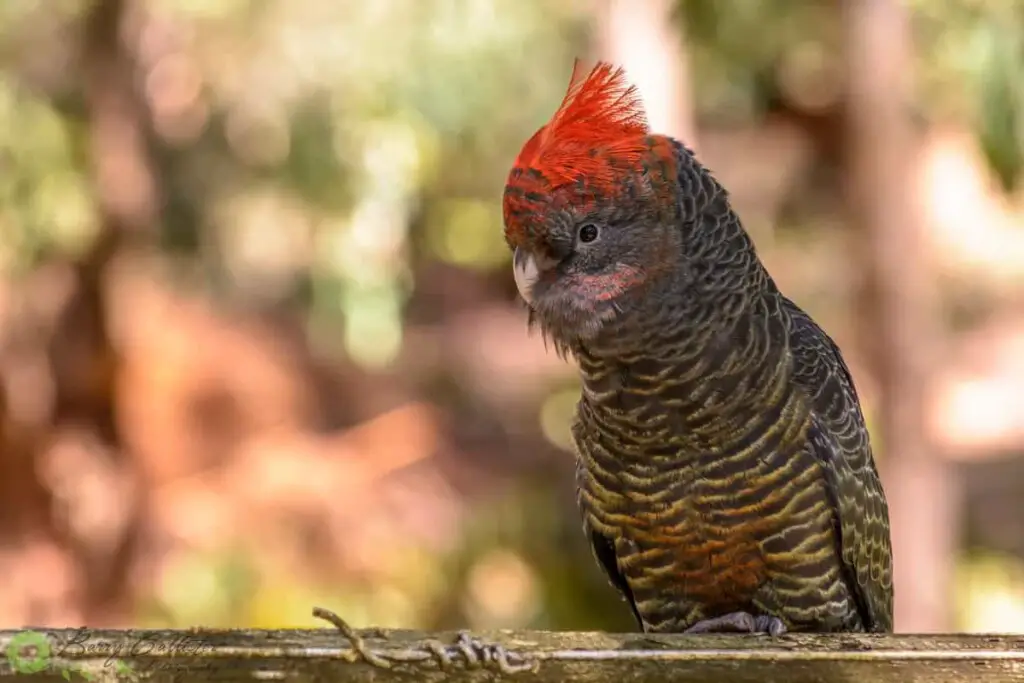
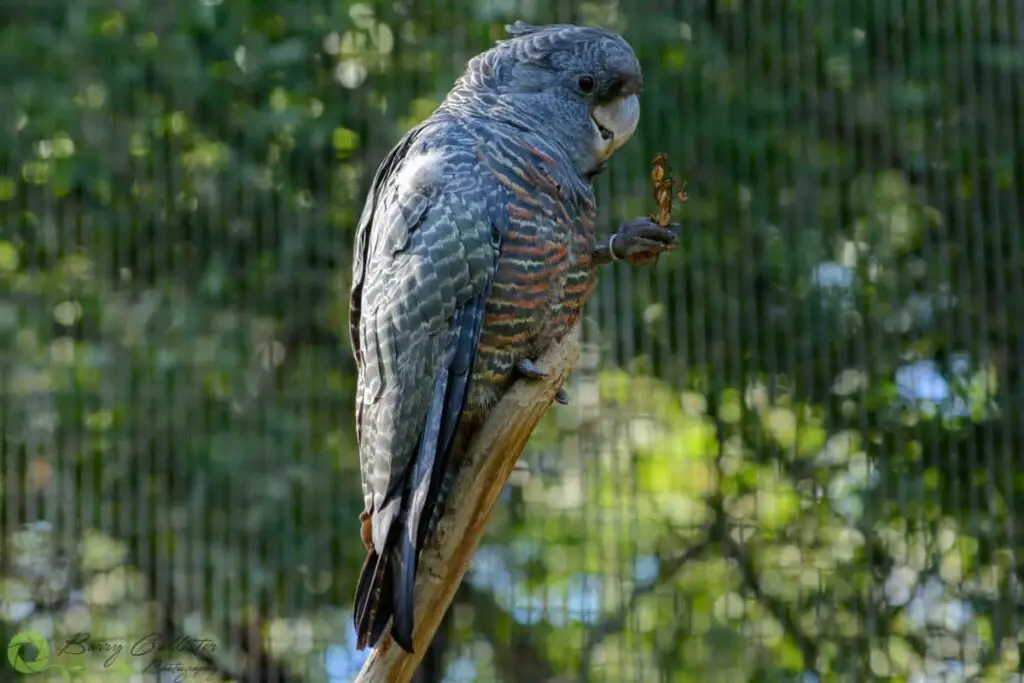
How could you resist the Gang Gang Cockatoo with its beautiful whispy red crest? Adult males have brilliant scarlet-red heads and crests. The females have an all-grey head and crest with feathers on their underparts edged with pink and yellow.
Gang gangs are found in the southeast corner of Australia. Formerly found on King Island until the 1960s, they have also been introduced to Kangaroo Island in South Australia.
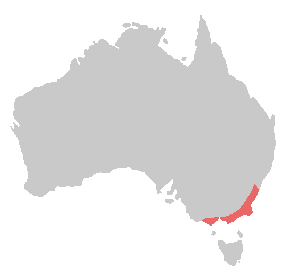
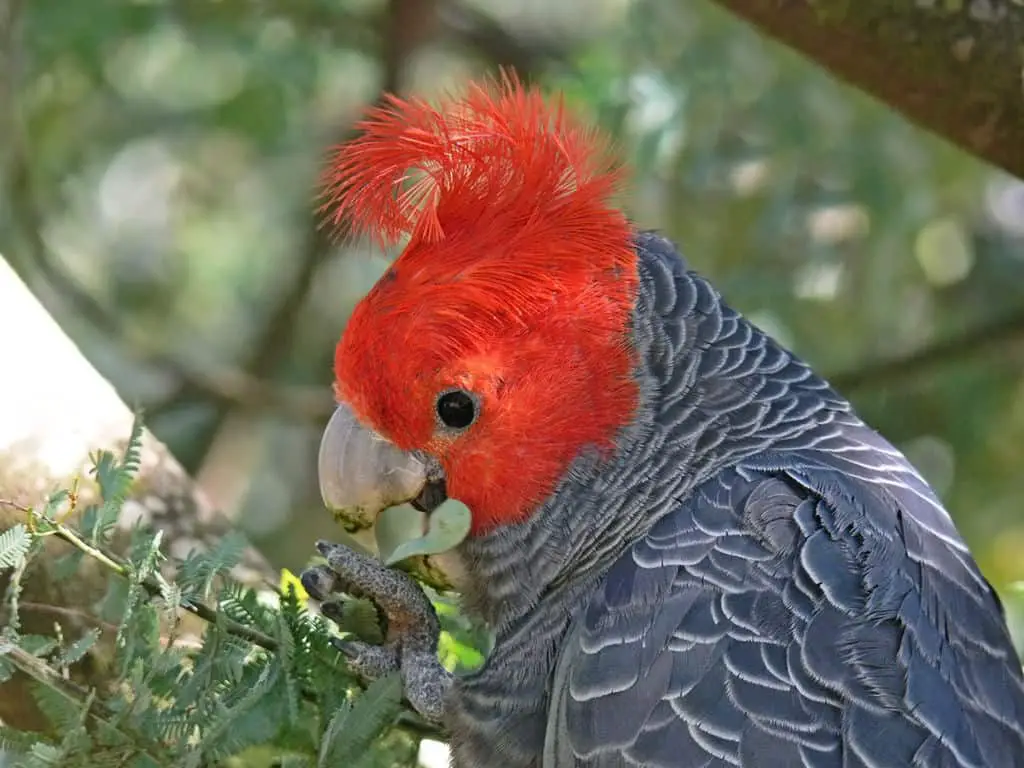
At between 32 and 37cm (12.6 – 14.57″) long with a wingspan from 62 to 76cm (24.41 – 29.92″) they are the biggest bird so far on this list but no less cute.
Gang-gang Cockatoos used to visit our 2-acre block in Gembrook Victoria on occasion. Their call is unmistakable, resembling the sound of a creaking door. Have a listen to their call on ebird.org and tell me it doesn’t make you want to get the oil can out?!
5. Silvereye

This cute little flyer even put on its eyeshadow for the occasion?!
Silvereyes are gorgeous birds around 11-13cm (4.3-5.1″) in length and weighing around 10g (0.36oz). They are native to Australia, New Zealand, and some southwest Pacific islands.

Silvereyes have a brush-tipped tongue like that of honeyeaters which they use to feed on nectar. They will also eat insects and fruit.
These little olive-green and grey birds are passerines. More than half of the world’s bird species fit into this category. Passerines are distinguished from other birds by the arrangement of their toes which enable them to perch. They are also called songbirds or perching birds.
Some Silvereyes migrate at the end of summer, flying over 1600kms (994.2 miles) from Tasmania all the way up to southern Queensland. Not a bad effort for tiny wings that only span 7cm (2¾”).
Are Emus Dangerous? Find out in this article here on my site.
6. Grey Fantail
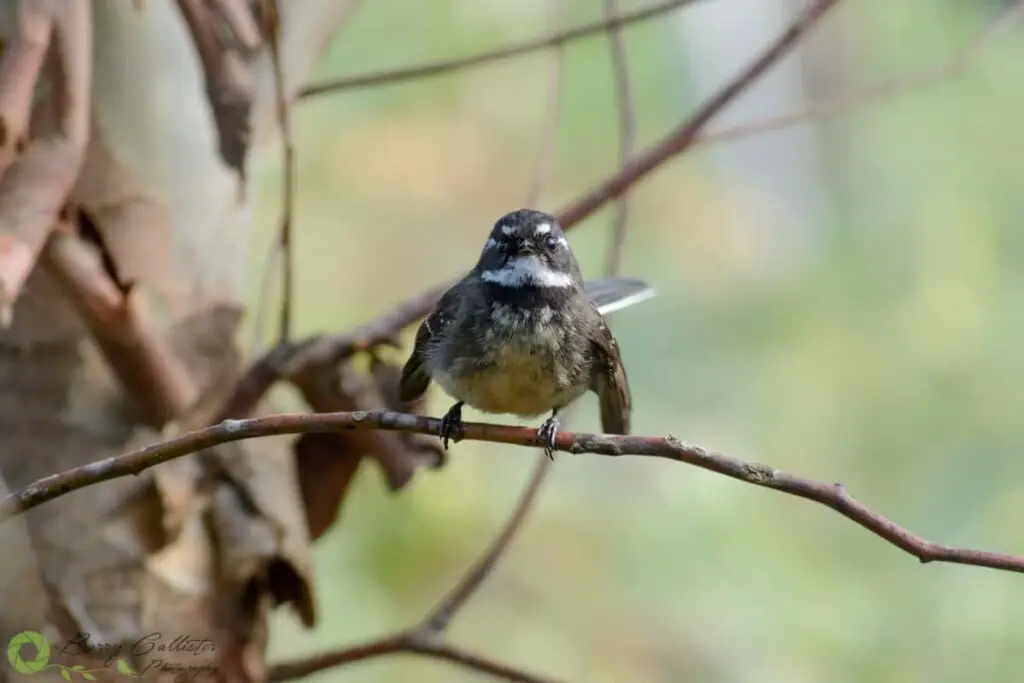
If anyone is going to win the cuteness contest here, it’s going to be this little tough guy?! The Grey Fantail.
These tiny birds are unmissable with their fanned tails and constant movement. They are either perched somewhere, swishing their tales back and forth, or darting about catching insects on the wing.
I once had a Grey Fantail fly right toward my head in our garden. It changed direction about 30cm (11.8″) from my face and began flying swift circles around my head, snapping up insects I had not even noticed were there?! It flew around my head three or four times before flying off into the trees. I had my camera on me at the time but as it was so incredibly close, I couldn’t take any shots. This is still one of the most incredible bird encounters I have had to date.
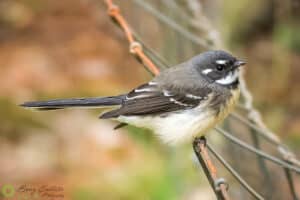
Grey Fantails can be found all throughout Australia. Some will fly across Bass Strait (a distance of around 500km or 310 miles) an amazing feat for such a little bird.
7. Spotted Pardalote

The Spotted Pardalote looks like a living, breathing Australian Aboriginal artwork. With its white-spotted black wings, yellow throat, and red rump (in males) it really is amazing to see. As they spend most of their time high in the canopy, it can be quite tricky to spot one of these birds.
These guys are found in eastern and southern Australia and also through to Perth in Western Australia.
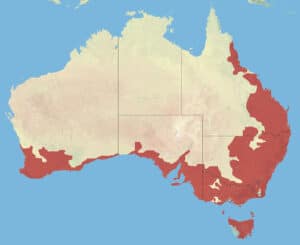
A Spotted Pardalote nest is an enlarged chamber lined with woven grass at the end of a tunnel. They will construct this in dirt mounds or sometimes the hollows of trees. Nests have even been found in rolls of carpet and garage roll-a-doors.
In this video from southernforestlife.net, you can see a male Spotted Pardalote at the entrance to his nest, doing some excavation.
The Spotted Pardalote is one of Australia’s smallest birds. They measure 8-10cm (3.1″-3.9″) in length and weigh just 8g (0.28oz).
What is Australia’s smallest bird? This article has the answer.
8. Red-browed Finch
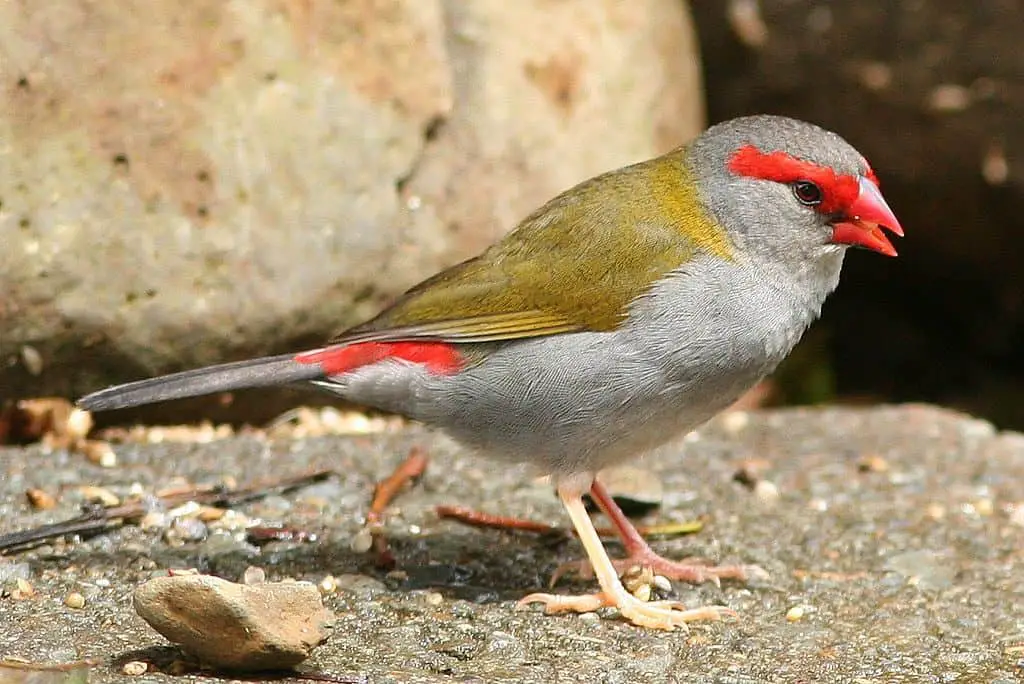
War-paint adorned Red-browed Finches are a small Australian native bird found down the east of Australia from the Cape York Peninsula in the north to South Australia.
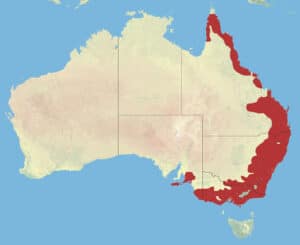
These cute little birds will forage in flocks of 10 or more looking for grass seeds and insects on the ground. They will often forage with other seed-eating birds such as other finches or parrots. Never antisocial, they will also feed with insect-eating birds such as Yellow-rumped Thornbills or Superb Fairy-wrens.
Red-browed Finches prefer grassy areas lined with dense understory vegetation. When startled, they will dart into the vegetation to take cover. They can often be found along creek or river edges.
Adult Red-browed Finches can be up to 11-12cm (4.3″-4.7″) in length. Both males and females are similar in appearance.
9. Willie Wagtail
Wagging into spot number nine is the Willie Wagtail.

These little Australian natives are so very cute. As their name suggests, they are prone to wagging their tails. When standing still or perched, they will sway their tales from side to side as if dancing. You can always spot a Willie Wagtail by this signature move.
The video below from Lari’s World on YouTube shows a Willy Wagtail doing what they do:
You may not believe it but these cute little birds are actually considered to be a bad omen. Some indigenous people thought Willy Wagtails would loiter on the edge of their camps, listening to conversations, and then fly off to tell their secrets elsewhere. They would also abandon an expedition if they saw a Willie Wagtail on the morning they were to leave. How could something this cute be bad?!
The Willie Wagtail is the largest Australian Fantail and is easily confused with the Grey Fantail we met earlier in the post. Their plumage is obviously more black than grey and they are also larger at around 19 – 21.5 cm (7.5″ – 8″) in length.
We often have Willie Wagtails visit our home. One I have affectionately named Willie will hop along the fence outside my office window every now and then. He will stop and wag his tail, cock his head at me through the window
10. Crimson Rosella
In the number 10 spot is the Crimson Rosella. I could not leave these birds out because they are just so cute despite being equal in size to a Gang Gang Cockatoo at around 36cm (14″). But cute things don’t always have to be small right?

One of Australia’s more colorful birds, the Crimson Rosella really makes a statement with its red head, neck, and belly; blue cheeks, black wings edged with red and blue, and a stunning blue tail. They really are a contrast to the rich greens of the Australian bush.
There are actually several different forms of the Crimson Rosella. Along the Murray River in northern Victoria, they are yellow, black, and blue instead of crimson. In southern South Australia, they are somewhere in between crimson and yellow with varying amounts of red and yellow.

Rosellas have such a quirky personality. They waddle about on the ground eating seeds, grasses, insects, and even flowers. They are very quick to approach any human with a handful of seeds and will quite comfortably perch on your arm, head, or any other part of your body while eating.
As you can see from the image below, Rosellas are found mainly in the southeast corner of Australia and Tasmania. There is also a separate population in the northern corner of Queensland.

Crimson Rosellas were frequent visitors to our garden when we lived in Gembrook in Victoria. One day I set up my GoPro in our bird feeder to see if I could capture them feeding and get some audio of their unique sounds. After a few minutes, some Common Bronzewings show up and grab a feed also.
And The Winner Is…
I wasn’t initially going to pick a winner in this post but I think it should be done. It’s a tough call but in my opinion, the win has to go to the Eastern Yellow Robin. I just can’t look at that brilliant yellow chest, poofy grey head, and big, dark eyes without declaring it the winner!
Australia has many more cute birds and I will explore those in future articles.
More Australian Birds
If your curiosity about Australian birds is still not satisfied, you might want to check out this post from my blog:
References
- Find A Bird – Birdlife Australia
- Wikipedia
- Brown Thornbill Mimics Alarm CallsBrown Thornbill Mimics Alarm Calls – SciNews.com
- Why Is The Brown Thornbill A Trickster – Tell Me Why Magazine
- Bird Finder – birdsinbackyards.net
